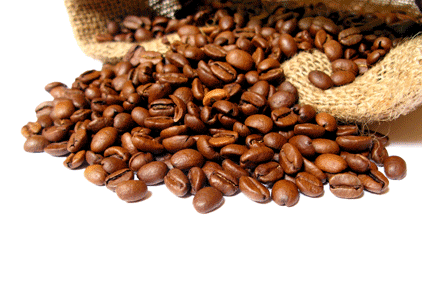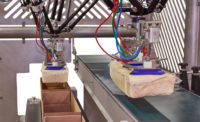On Valentine’s Day, Harvard Medical School’s HealthBeat newsletter ran an informative article entitled “What is it about coffee?” The authors reminded us of the days not too long ago when we worried that coffee would harm our hearts, give us ulcers, deform our babies and make us overly nervous.

|
Thanks to a number of coffee-loving scientists, we now know that coffee is not the enemy, and in fact, coffee can have a positive impact on health and wellness. Studies show that coffee can lower the risk of depression among women, lower the risk of lethal prostate cancer among men and lower the risk of stroke for both genders. Other positive benefits still being explored include protective effects against cancer, diabetes and even memory. Interestingly, some research suggests that these benefits should be attributed to the naturally occurring caffeine in coffee beans, while other studies have shown no differences between caffeinated and decaffeinated coffee.
Here’s a fact that has been proven in my family: I cannot function in the morning until I have at least one cup. And I like it black and strong. Many of you are like me, while others enjoy the flavor of coffee throughout the day, and in various delivery vehicles. The good news is that coffee ingredient suppliers have a variety of offerings to complement most applications, including all types of dairy foods—from milk to yogurt to ice cream.
Before you start adding coffee to your dairy products, it is best to understand coffee beans and the many ingredients made from them. For starters, though there are two basic species of coffee plants—Coffea arabica and Coffea robusta—the beans from these plants can vary significantly based on growing conditions, harvesting and milling, and storage and handling.
Coffee gets most of its flavor from roasting, which produces hundreds of different volatile ingredients, and these compounds vary by roasting process. This also impacts the pH of the coffee beans, and the coffee ingredients made from these beans. It is important to note that low pH coffee ingredients can react with the proteins in milk during thermal processing. If the milk base is not properly buffered to adjust and balance the pH of the added coffee acids, protein agglomeration can occur. This is most visible in a beverage in the form of a white ring around the neck of the container or as small flocculates in the bottom of the container.
There are a number of coffee ingredient forms to choose from, and it is important to work closely with your supplier to determine the best ingredient to achieve your finished product goals. In addition to simply tasting good and looking appealing, one should consider marketplace positioning, shelf life, distribution channel and

|
formulation costs.
In general, the least expensive form is freeze-dried or powdered coffee. It can be stored at ambient temperature and has a lengthy shelf life. This product often delivers an acidic or bitter aftertaste and a formulator needs to mask this with other flavors, thickeners or sweeteners. Coffee concentrates and extracts come in a wide range of qualities, as well as a variety of flavors and strengths to meet a formulator’s desired flavor profile and bottom line. These ingredients are typically made by brewing coffee, followed by reducing the water in the resulting brew. Another option is coffee flavors, which may or may not be derived from coffee beans. Flavors can be used alone or to enhance the aforementioned coffee ingredients.
In addition to being used as a characterizing flavor in dairy products such as milk, ice cream and yogurt, coffee ingredients complement caramel, nut and savory flavors, and can be used to make innovative variegates for frozen desserts and yogurts.
It’s time to add some coffee to your milk products.







